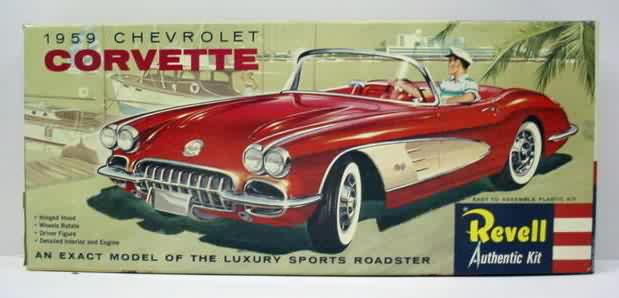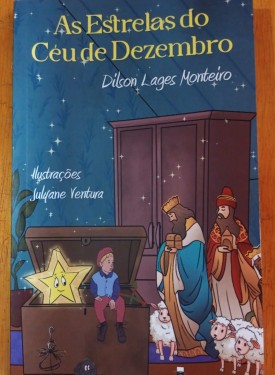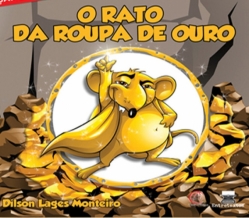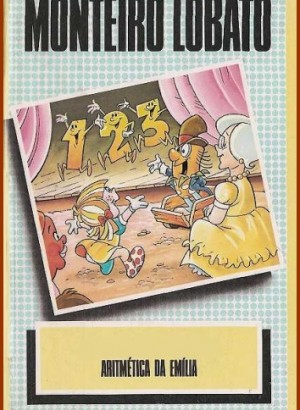André Basílio defende o adoravelmente quixotesco Tucker
 Por Flávio Bittencourt Em: 17/05/2010, às 20H44
Por Flávio Bittencourt Em: 17/05/2010, às 20H44
André Basílio defende o adoravelmente quixotesco Tucker
Se corresponde a uma verdade comprovável o fato de que todos os dias o site de André Basílio sobre possível fraude do homem na Lua recebe tantas visitas, o que ele escreve sobre o falecido industrial americano Preston Tucker merece ser conferido.
MINIATURA DE CARRO ANTIGO, kit da Revell (FABRICANTE DE BRINQUEDOS DE PLÁSTICO)
para montar, dos "bons tempos que não voltam mais"
(http://www.gasolinealleyantiques.com/kits/images/CarRevell/revell-59vette1.JPG)
"AQUILO, O TUCKER TORPEDO - ou Tucker 1948, como depois passou a ser chamado -, NÃO É UM CARRO, MAS UM VERDADEIRO "FOGUETE ESPACIAL-TERRÁQUEO", DOS ANOS 40, PARA TRANSITAR EM RUAS, AVENIDAS, FREEWAYS, PONTES E ESTRADAS, SEM ALÇAR VÔO LITERAL, PORQUE SEUS TRIPULANTES JÁ MERGULHAM EM ALTA NAVEGAÇÃO, ONÍRICA"
Coluna "Recontando estórias do domínio público"

PEQUENA RÉPLICA DE OBRIGAÇÃO AO PORTADOR DA CORPORAÇÃO TUCKER:
AS INDÚSTRIAS DE BRINQUEDO FICAM MUITO ATENTAS A TUDO AQUILO
QUE, NO MUNDO DA HISTÓRIA DA FÁBRICAS, É VERDADEIRAMENTE cult
http://educraftdiversions.org/Tucker_Stock_Certificate_Replica_small.jpg)

"ESPÁCIOMODELISMO" (foguetes em "kitmodelismo"):
MARAVILHOSA PLATAFORMA COM O RESPECTIVO FOGUETE ESPACIAL EM MINIATURA,
no portal de EDU CRAFT DIVERSIONS,
http://educraftdiversions.org/, onde, sem a legenda acima lida, se pode ler (legenda de várias fotos),
"SPACE SHUTTLE ERA CRAWLER TRANSPORTER (CT) (...) HEAVY PAPER MODEL KIT FOR REVELL 4910-4811 SHUTTLE WITH BOOSTER AND LAUNCH PAD 1/133 MODELS (...)"
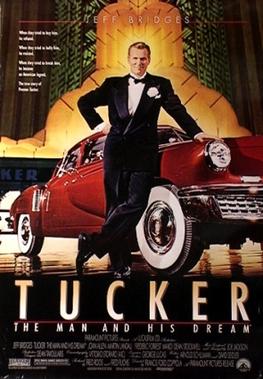
TUCKER - O HOMEM E SEU SONHO;
COMENTÁRIO DESTA COLUNA: a concretude automobilístico-metálica
do sonho dele era absolutamente imaginária, o que significa que
quem consegue COMPRAR um Tucker que sobrou daquele tempo
está ADQUIRINDO, por não sei quantas centenas de milhares de dólares,
UM SONHO MATERIALIZADO nessa espécie de delirante "estágio onírico do
consumismo desvairado da sociedade contemporânea", o que significa que
TER UM TUCKER (*) PODE ATÉ DAR AZAR (**), se não houver superstição delirante
de nossa parte, quando afirmamos semelhante "heresia" eminentemente
ANTICONSUMISTA (ou simples declaração de pobreza, vai lá saber...)!
(Só a reprodução do cartaz, sem a consideração possivelmente
séria acima corajosamente exposta, está, na Web, em:
http://upload.wikimedia.org/wikipedia/en/2/28/Tuckerposter.jpg,
sendo que, em http://www.fastdriver.com.br/noticia.asp?idnot=177,
se pode ler:
"Tucker – Um Homem e Seu Sonho (1988)
Diretor – Francis Ford Coppola
Duração – 110 min
Gênero – Drama
Elenco – Jeff Bridges, Joan Allen, Martin Landau, Christian Slater ")
(* ) - O TUCKER '48 SEDAN, inicialmente denominado TUCKER TORPEDO
(**) - De acordo com os fundamentos semiótico-simbólicos desta Coluna "Recontando...", não se deve colocar um sonho à venda, a menos que seu criador tenha sido Preston Tucker, nem que se trate de um sonho materializado em miniatura de carrinho, fabricado, por exemplo, por Corgi Toys (indústria americana) ou Kagaku (japonesa).
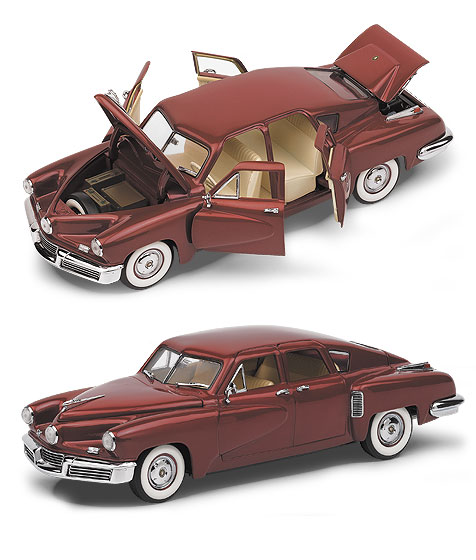
O TUCKER TORPEDO PARA SER COMPRADO POR UM DE NÓS:
carrinho em miniatura que faz a respiração ficar suspensa
(Só as foto do carrinho com portas abertas e com portas fechadas:
http://www.maniadecarrinhos.com.br/loja/index.php?manufacturers_id=12&sort=2d&filter_id)
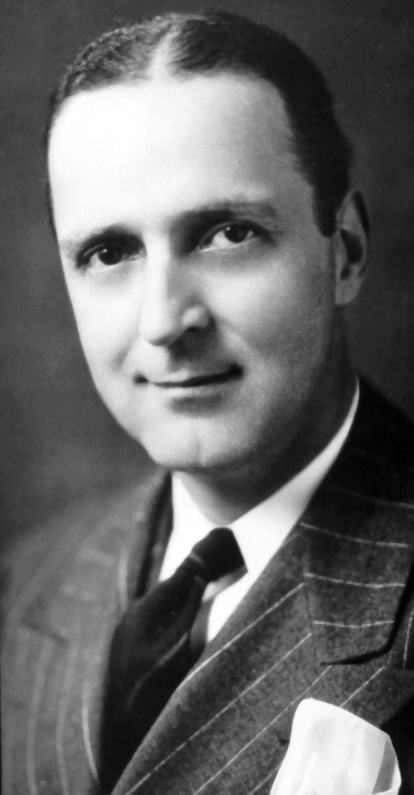
PRESTON THOMAS TUCKER (1903 - 1956),
"o homem que transformou sonho em objeto pesado"
(Só a foto do saudoso Tucker, sem a legenda acima apreciada:
http://commons.wikimedia.org/wiki/File:Preston_Tucker.png)
À memória de Preston Thomas Tucker
e aqueles que investiram no sonho TUCKER 1948
(ainda que tenham perdido dinheiro na empreitada,
PRINCIPALMENTE POR CAUSA DISSO, uma vez
que É PRECISO INVESTIR EM SONHOS),
a todos - do roteirista ao eletricista, passando pelos
artistas envolvidos no concreto-onírico processo -
os que ajudaram que um SONHO DE FRANCIS FORD COPOLLA
[O DE CONTAR A ESTÓRIA DO SONHO DE TUCKER SE
MATERIALIZANDO EM AUTOMÓVEL DO FINAL ANOS 40]
se transformasse em pesados rolos de filmes de cinema,
agradecendo a André Basílio, principalmente pelas reflexões
que seus escritos sem pedantismo algum instigantemente
deflagram, NÃO IMPORTA SE TENDO HAVIDO FRAUDE
(OU NÃO) NA TRANSMISÃO DE HOMEM NA LUA, EM 1969, e
homenageando empreendedores, gerentes, cientistas e
trabalhadores em geral das indústrias de miniaturas Revell e
Corgi Toys (americanas) e Kagaku (japonesa)
18.5.2010 - Ele, com grande sinceridade e pureza d'alma, como de resto aqui se procura também fazer, defende Preston Tucker - Interessam à Coluna "Recontando..." certos escritos André Basílio. A questão parece centrar-se mais no ESTILO de Basílio do que, propriamente, na questão de se o que ele diz que foi fraude foi fraude ou não. André Basílio, cujo site é muito visitado (extraordináriamente visitado: visitadíssimo!), por afirmar que a transmissão televisiva do homem pisando na Lua foi fraudulenta (principalmente por causa de um detalhe da bandeira - E ISSO É MAGNÍFICO, porque se trata de um símbolo sobre o qual recai tanto investimento afetivo), falando sobre um ídolo desta Coluna, o falecido industrial Preston Tucker, é acontecimento digno de reflexão. Mais do que isso: digno de reflexão profunda. Mais ainda: digno de respeito, não sei se de veneração. Mas que aqui se venera a memória de Preston Tucker, disso não resta dúvida. OBSERVE-SE QUE AQUI NÃO SE VENERA O MODELO DE PRESTON TUCKER, aqui se venera a memória de seu empreendedor. Mas ninguém tem vergonha de admirar o design daquele automóvel, uma vez que tal carrão é um verdadeiro e fabuloso fenômeno do século XX, sobre o qual se contam e recontam muitas estórias, todas (oralmente transmitidas, escritas ou cinematografadas) sobre o - como logo acima foi anunciado - fenomenal TUCKER 1948 e seus adoravelmente malucos idealizadores e investidores de alto risco! F. A. L. Bittencourt ([email protected])

Preston Tucker e seu revolucionário Tucker Torpedo

O belo e potente Tucker Torpedo com um terceiro farol na frente que inclina junto com o volante para iluminar nas curvas

Em 1949, o lendário Tucker Torpedo chegava a 190 km/h e fazia de 0 a 100 km/h em apenas 10 segundos

Founded in 1924, Kodomo no Kagaku (”Science for Kids”) is THE magazine for Japanese kids to recreate scientific looking stuff until today. And right now, Tokyo’s INAX Gallery 1 is holding the The Age of Crafts - Growing up with ‘Kodomo no Kagaku’ exhibition, which features recreations of projects featured in the magazine’s issues of the 1950s and 60s. How cute! Remember, these projects symbolise an age when electric washing machines and lunar landing vessels held a deep fascination throughout the nation. PingMag went to INAX for a trip into the past with kids’ wonderful science projects.
Written by Ryoko
Translated by Kevin Mcgue
Kodomo no Kagaku (”Science for Kids”) was and still is a magazine that introduces the fundamentals of branches of science from botany to space exploration. The magazine was perhaps most famous for its science projects, which would teach children to make things such as paper airplanes and miniature models of household appliances. Kodomo no Kagaku was founded in 1924, and since then it has garnered many loyal fans, including many people who continue to read it long after becoming adults, scientists – and even Nobel Prize winners.

The recreations of the old science projects were constructed by the group Nejimawashi (”screwdriver”), which runs a “toy hospital,” volunteering to fix broken toys. The volunteers in this group grew up making the projects featured in Kodomo no Kagaku, then went on to work as technician or engineers. After retiring, they went on to do this volunteer work. Some of the projects featured in the exhibition are models of washing machines and electric mixers, which were highly coveted appliances when these people were young. Sweet nostalgia!

A miniature model of a washing machine by Toshiba, a big hit in Japan in 1952.

The inside of the washing machine model with blades to turn the clothes. The lid for this model was made from a cheap tea saucer. Clever!

A model of an electric mixer that went on sale in 1952. The top and bottom of the model are made from containers found at a ¥100 shop.

A rather complicated project: a model of a wire operated cable car.
Special about the projects in Kodomo no Kagaku was that the instructions were simply blueprints. Whereas many magazines for kids include projects with whole illustrations of how to put the model together, or include a kit of all the needed parts that anyone could easily put together.


On display in the exhibition are plans for a model train that appeared in the magazine in the 1960s. There is a detailed blueprint and some building instructions on the other side – but that is all! According to the exhibition booklet, “Although the projects in Kodomo no Kagaku looked simple, when one actually tried to make them, they were actually quite complex. Even after the basic shape was made, the builder had to think of how to make it move. Thinking through these problems was actually more important than the printed instructions.”


So, why was Kodomo no Kagaku giving such complex projects to kids? A quote from Mitsuo Harada, the founder of the magazine, sheds some light on the question. “The most important goal of this magazine is to make people understand what true science is. Science makes clear the rules of nature, and by understanding these, we can enjoy our lives and contribute to civilisation.” Current editor-in-chief, Bungo Kashiwagi, has this to add: “Children’s knowledge and curiosity is not any less varied or deep that that of adults. For example, kids who love collecting insects are very good at remembering the scientific names of insects in reference books. By simplifying information somewhat and putting the focus on fun projects, I believe that we are able to teach children true science.”

A rubber band-powered model airplane.

An “Egyptian water clock,” powered by, of course, water.

With Kodomo no Kagaku projects, the most important thing is making objects with your own hands while thinking through the challenges of the project. This allows kids to really understand its principles by watching it take shape in front of their own eyes, making the parts move through their own work. This magazine was founded in times different than our own, when kids did not have pocket money and it was difficult for them to get parts and tools for their project. However, seeking out the items they needed made them use their imagination.


Thanks to everyone at the INAX Gallery. If you are in Tokyo, definitely go see the exhibition!
Exhibition:
The Age of Crafts - Growing up with “Kodomo no Kagaku”
Venue: INAX Gallery 1
Address:
Inax Ginza Building, 3-6-18 Kyobashi, Chuo-ku, Tokyo. Map.
Running until Saturday, May 24th.
Closed Sundays".
(http://pingmag.jp/2008/05/15/junior-scientist/)
SE VOCÊ FOR EM SUAS PRÓXIMAS FÉRIAS - ou a negócios - A TÓQUIO,
NÃO DEIXE DE VISITAR ESSA MAGNÍFICA EXPOSIÇÃO DA FÁBRICA DE BRINQUEDOS
KAGAKU!
ROMANCE-CULT DE DÍLSON LAGES MONTEIRO, editor deste Entre-textos

20,00 R$
Pedidos também pelo e-mail [email protected]


